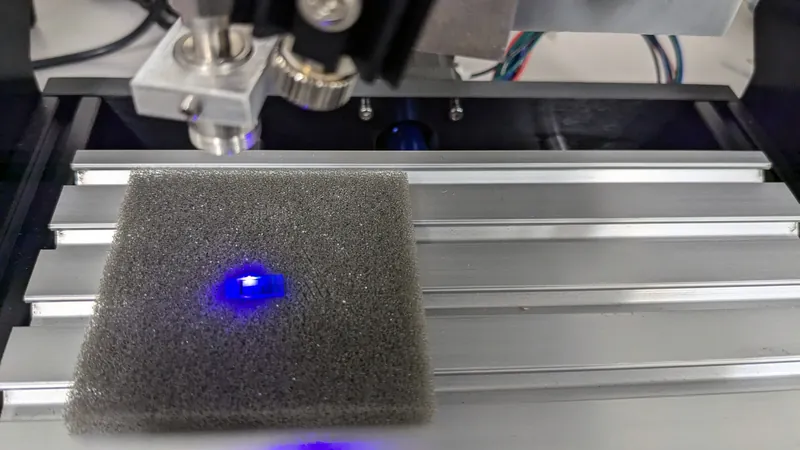
Revolutionary LED Breakthrough: Say Goodbye to Efficiency Droop!
2024-11-25
Author: Arjun
Introduction
Light-emitting diodes (LEDs) have transformed our daily lives, illuminating everything from smartphones to entire cities. However, a significant challenge has persisted: when you crank up the power to make these lights brighter, they tend to lose efficiency—a phenomenon known as 'efficiency droop.' But hold onto your seats! Researchers at Nagoya University in Japan have found a groundbreaking solution that not only enhances brightness but also keeps efficiency intact.
Research Details
In their remarkable study published in the journal Laser & Photonics Review, the team, led by the innovative Markus Pristovsek, delved deep into the unique properties of the gallium nitride/indium gallium nitride (GaN/InGaN) layers. These layers are crucial for generating light. InGaN LEDs are already recognized as the globe's most efficient light sources, typically thriving at lower power levels. The major hurdle, however, was maintaining performance while pushing for higher power outputs.
Traditional Approach and Its Limitations
Traditionally, increasing the LED chip size was an option to harness more light, but this approach leads to higher manufacturing costs and a more considerable environmental footprint. With the current global emphasis on sustainable technology, this was far from ideal.
The Innovative Solution
After extensive research, Pristovsek and his colleague Nan Hu discovered a clever trick! By tilting the InGaN layers and adjusting the chip's orientation, they were able to alter the polarization properties within these layers. This novel approach has been under investigation for over 15 years, yet it wasn't until now that they realized the direction of the polarization is just as crucial. By applying their findings, the researchers grew the LED on a cost-effective sapphire substrate, taking advantage of a unique (101̅3) orientation. Remarkably, these innovative LEDs displayed higher efficiency even at elevated power levels.
Implications of the Discovery
The implications of this discovery are massive. Manufacturers could now craft next-generation LED technologies that boast brighter, more efficient micro-LED displays for mobile devices, TVs, and even automotive lighting. Moreover, with the potential for faster switching speeds, applications could extend to cutting-edge visible light communication technologies and immersive virtual reality glasses.
Looking Ahead
As we look ahead, the quest for even better orientations seems to be closing in. According to Pristovsek, there's a strong likelihood that no superior orientation will emerge for cost-effective sapphire substrates—limited to just two tilted directions.
Conclusion
This research not only opens doors to brighter and more efficient lighting solutions but also contributes significantly to reducing production costs and environmental impacts. The future of LED technology looks promising, transforming illumination as we know it! Stay tuned for what comes next in the world of lighting innovation!




 Brasil (PT)
Brasil (PT)
 Canada (EN)
Canada (EN)
 Chile (ES)
Chile (ES)
 España (ES)
España (ES)
 France (FR)
France (FR)
 Hong Kong (EN)
Hong Kong (EN)
 Italia (IT)
Italia (IT)
 日本 (JA)
日本 (JA)
 Magyarország (HU)
Magyarország (HU)
 Norge (NO)
Norge (NO)
 Polska (PL)
Polska (PL)
 Schweiz (DE)
Schweiz (DE)
 Singapore (EN)
Singapore (EN)
 Sverige (SV)
Sverige (SV)
 Suomi (FI)
Suomi (FI)
 Türkiye (TR)
Türkiye (TR)